While historically high new and used car prices have forced buyers to look for "older" vehicles that may have aged well as a way of saving money, the issues of reliability and dependability have become even more crucial.
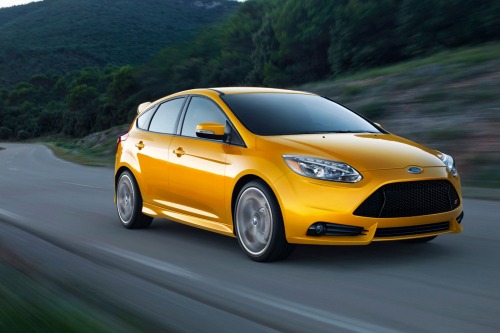
While many consumers have been attracted to the Ford Focus for its good looks, fuel efficiency, nice drive, and affordability, the big question today is, "is it reliable now that it's older?"
Well, history has proven that its reliability record is a bit mixed. While many owners have had very good experiences with primarily just standard maintenance, others have reported more serious or recurring mechanical issues, particularly with the earlier models.
It should also be noted that the longevity of an older Focus can vary depending on several factors, including its individual maintenance history, owner driving habits, environmental conditions, and overall care.
That said, however, its been found that with proper maintenance and care, it's possible for an older Ford Focus to last in the 200,000 mile range, and sometimes much further, which is a respectable outcome when compared to other economy vehicles.
So here, ...
- We'll do an overview of all three Ford Focus generations, covering the 2000 - 2018 model years.
- Then we'll list the possible mechanical issues for each generation that have been reported by some owners so they can be checked before buying one today.
- And then we'll summarize the overall pros and cons of an older Focus worth consideration for potential buyers today.
Third Generation Ford Focus (2012 - 2018)
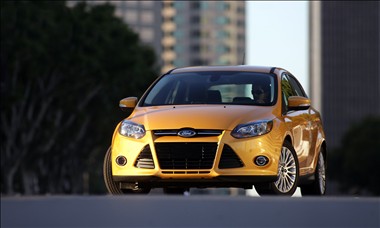
The last generation Focus, its third, made its debut early in the 2012 model year and carried through 2018 when it was discontinued.
This Focus was impressively redesigned and invigorated with stylish good looks, a fun-to-drive personality, higher quality materials, excellent gas mileage, and a host of available high-tech features. In fact, it clearly ranked among the small car segment leaders.
Refinement and Comfort: This version featured improvements in cabin refinement and overall comfort compared to the second generation. Enhanced sound insulation, better-quality materials, and improved seating comfort contributed to a quieter and more comfortable driving experience.
Safety Features: Additional advanced safety features and technologies were introduced, including active park assist, blind-spot monitoring, lane departure warning, and automatic emergency braking systems.
Handling and Ride Quality: Building on the handling dynamics of its predecessor, this generation further improved with refined suspension tuning and chassis enhancements, offering even better handling and ride quality.
Interior Design and Space: The interior improved ergonomics and overall better use of space compared to the second generation. This cabin is more modern and spacious, with increased legroom and headroom for both front and rear passengers. Additionally, cargo space was increased in the hatchback models.
Engine Performance and Efficiency: There was a range of improved engine options, including more powerful and fuel-efficient choices compared to provide better performance while also meeting stricter emissions standards.
Build Quality and Reliability: Ford continued to make efforts to improve build quality and reliability. While certain mechanical issues persisted (see below), overall reliability and durability were enhanced, resulting in fewer reported problems in areas such as transmission reliability and electrical issues.
Exterior Styling: This Focus featured updated exterior styling with a more modern and aerodynamic design compared to its predecessor. The refreshed appearance helped the Focus remain competitive in its segment and appealed to a wider range of buyers.
Overall, the third generation Ford Focus represented a significant step forward in terms of refinement, safety, performance, and overall quality compared to its predecessor.
Standard features on the base model Focus S (sedan only) include power front windows, power mirrors, power locks, air-conditioning, keyless entry, 15-inch steel wheels, a tilt/telescoping steering wheel, a height-adjustable driver seat, an anti-theft engine immobilizer, quad beam halogen headlights, a tire pressure monitor, a 4-speaker audio system with a CD/MP3 player, and an auxiliary audio jack.
The Focus SE adds rear power windows, steering-wheel-mounted audio controls, foglights, automatic headlights, a rear spoiler on the hatchback, 16-inch steel wheels, Ford's MyKey parental controls, and a trip computer.
The hatchback SE also comes with a removable cargo cover and a 60/40 split-folding seatback instead of the sedan's one-piece folding seatback.

Moving up to the Focus SEL adds most of the SE's available options (but not the sport-tuned suspension), one-touch up/down power windows and multicolored ambient lighting.
The top-of-the-line Titanium model adds the sport-tuned suspension, 17-inch alloy wheels, MyFord Touch technology with a center touchscreen and Wi-Fi, keyless entry/ignition, upgraded interior and exterior trim accents, a rear spoiler on the sedan, and a 10-speaker Sony sound system with HD radio and satellite radio.
Powering this Focus version is a 2.0-liter inline four-cylinder engine that produces 160 horsepower and 146 pound-feet of torque. It's paired with a 5-speed manual transmission as standard on the S and SE model.
There's also a 6-speed automatic transmission, called "Powershift", that was standard on SEL and Titanium models (optional on the S and SE). Powershift is not really a traditional automatic transmission, but is actually a dual-clutch automated manual.
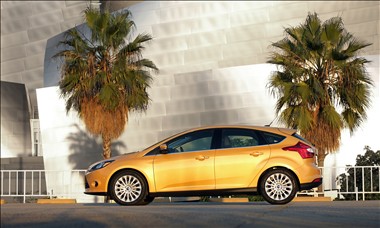
Its fuel economy is another plus. The EPA-estimated gas mileage for 5-speed manual models is 26 mpg city and 36 mpg on the highway. Focuses equipped with the 6-speed dual-clutch automatic are rated even better at 28 mpg city and 38 mpg highway.
The best gas mileage performer is the SE equipped with the SFE package, with ratings coming in at 28 and 40, respectively.
2012 - 2018 Ford Focus Possible Mechanical Problems
The third generation has generally been regarded as a solid compact car. However, like any vehicle, it has had its share of mechanical issues as reported by some owners. These issues should therefore be included in an inspection before buying one today.
Transmission Issues: Some models equipped with the PowerShift dual-clutch automatic transmission experienced problems similar to those in the second generation, including rough shifting, hesitation, and possible failure.
Engine Performance: Some owners reported issues with engine performance, such as rough idling, misfires, and stalling. These problems could be caused by various factors, including faulty ignition coils, spark plugs, or fuel injectors.
You May Also Like:
Is It A Good Time To Buy A New Car?
All About Wholesale Car Values
Cooling System Concerns: Some Focus models experienced coolant leaks due to issues with the radiator, hoses, or water pump. Overheating could occur if these problems were not addressed promptly, potentially leading to engine damage.
Electrical Problems: Like previous generations, some owners experienced electrical issues, including problems with the power windows, door locks, and interior lights. These issues were often caused by faulty wiring, switches, or control modules.
Suspension and Steering Components: Premature wear and failure of suspension and steering components, such as control arms, tie rods, and sway bar links, were reported by some owners. These issues could lead to noise, vibration, and poor handling characteristics.
Brake System Issues: Premature wear of brake components, including brake pads, rotors, and calipers, was reported by some owners. Additionally, issues with the ABS system, such as malfunctioning sensors or hydraulic unit failures, were observed in some models.
Exterior Trim and Body Integrity: Some owners reported issues with exterior trim pieces, such as door handles and side mirrors, coming loose or falling off. Additionally, some models experienced rusting, especially in regions with harsh climates or road salt usage.
Second Generation Ford Focus (2008 - 2011)
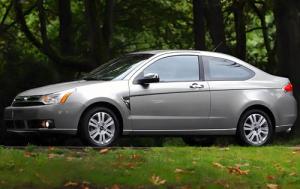
The second generation was a fairly significant refresh that included the introduction of the coupe body style, updated interior and exterior styling, and introduced a more powerful engine and new safety features.
Refinement and Comfort: The second generation Focus featured improvements in cabin refinement and overall comfort compared to the first generation. Enhanced sound insulation, better-quality materials, and improved seating contributed to a quieter and more comfortable driving experience.
Safety Features: This version introduced a range of advanced safety features that were either optional or not available in the first generation. These included features such as side curtain airbags, stability control, traction control, and tire pressure monitoring systems.
Handling and Ride Quality: While the first generation Focus was praised for its handling dynamics, the second generation further improved upon this aspect. With revised suspension tuning and chassis enhancements, this Focus offered even better handling and ride quality, providing a more engaging driving experience while maintaining comfort.
Interior Design and Space: This Focus featured a redesigned interior layout with improved ergonomics and better use of space. The cabin felt more modern and spacious, with increased legroom and headroom for both front and rear passengers.
Engine Performance and Efficiency: The second generation Focus offered a range of improved engine options, including more powerful and fuel-efficient choices compared to the first generation.
Build Quality and Reliability: Ford made efforts to improve build quality and reliability with this version. While certain mechanical issues persisted, overall reliability and durability improved.
Exterior Styling: The second-generation Focus featured updated exterior styling with a more contemporary design language. The refreshed appearance helped the Focus remain competitive in its segment and appealed to a wider range of buyers.

Overall, the second generation Ford Focus represented a significant step forward in terms of refinement, safety, performance, and overall quality compared to its predecessor. These improvements helped solidify the Focus as a popular choice in the compact car segment.
Initially, the trims included base S, midgrade SE and sporty SES models for both the coupe and sedan. This was changed for the 2009 Focus, with the sedan being available in S, SE, SES and SEL trims, while the coupe was offered as the SE and SES.
In addition, some of these older Focus models can be found with the then newly added stability control option. The coupe also received a minor exterior revision.
Under the hood of all of these Focus models is a 2.0 liter inline four-cylinder engine that pumps out 140 horsepower. Shoppers in California-level emission states can find the cleaner, PZEV-certified version of this engine that produces 130 horsepower.
Transmission-wise, all can be found with either the standard 5-speed manual or the optional 4-speed automatic.
Gas mileage performance for the manual transmission is very good at 24 mpg city and 35 mpg on the highway. So is the automatic, actually, with the same in the city and losing only 2 mpg on the highway. And overall, they both provide a rather engaging driving experience for a car in their price range.
While the interiors of these Focus models are reasonably attractive, they may be a little inferior to some of the segment leaders when it comes to materials quality. They do, however, compensate with the addition of Ford's Sync system (developed with Microsoft) which allows for voice-controlled cell phone, PDA and MP3 devices.
2008 - 2011 Ford Focus Possible Mechanical Problems
This generation addressed some of the issues found in the first generation but still had its share of mechanical problems reported by owners, which should therefore be included in a pre-purchase inspection.
Transmission Problems: Some models equipped with the PowerShift dual-clutch automatic transmission experienced issues such as rough shifting, hesitation, and premature wear, sometimes leading to transmission failure.
Engine Performance: Some owners reported issues with engine performance, including misfires, hesitation, and stalling. These problems could be caused by various factors, including faulty ignition coils, spark plugs, or fuel injectors.
Electrical Gremlins: Like many vehicles, this Focus could experience electrical problems, including issues with the power windows, door locks, and interior lights.
Suspension and Steering Components: Premature wear and failure of suspension and steering components, such as control arms, tie rods, and sway bar links, were reported by some owners.
Cooling System Concerns: Some Focus models experienced coolant leaks due to issues with the radiator, hoses, or water pump.
Rust: Similar to the first generation, the second generation Focus was susceptible to rusting, especially in regions with harsh climates or road salt usage. Common rust areas included the rear wheel arches, subframe mounts, and suspension components.
Brake System Issues: Premature wear of brake components, including brake pads, rotors, and calipers, was reported by some owners. Additionally, issues with the ABS system, such as malfunctioning sensors or hydraulic unit failures, were observed in some models.
First Generation Ford Focus (2000 - 2007)
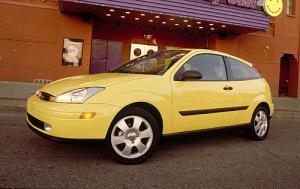
This Focus was offered as a two-door hatchback ZX3, a ZX4 sedan, and a ZXW wagon. These older models can be found with either a fairly unenergetic SOHC 2.0-liter inline four-cylinder good for 110 horsepower, or a quite capable, and therefore preferred, DOHC 2.0-liter engine (the Zetec), rated at 130 horsepower.
Transmissions were again either a 5-speed manual or 4-speed automatic.
Older used Focus shoppers should be aware that there were a number of significant changes in the earlier models:
From 2000 through 2004, the trim levels were usually base LX, midgrade SE and uplevel ZTS. Optional front-seat side airbags and antilock brakes (ABS) can be found in some of these vehicles, as can stability control, which was offered for several years beginning in 2001.
For 2002, the four-door hatchback ZX5 was added. And beginning in 2004, a 2.3-liter inline-4 that generated 145 horsepower and cleaner emissions was made available.
In addition, the quite hard to find and short-lived (2002-2004) Focus SVT hatchback featured a 170 horsepower four-cylinder engine and a 6-speed transmission.
There was also a mild update for 2005 which included some exterior cosmetic changes, a redesigned interior control layout inside and new engine choices (a 136 horsepower, 2.0-liter four-cylinder or a sedan-only 2.3-liter, four-cylinder that produced 151 horsepower).
2000 - 2007 Ford Focus Possible Mechanical Problems
Some common problems reported by owners that should be included in a pre-purchase inspection include:
Transmission Issues: The automatic transmissions in some early models were prone to failures, including slipping gears, rough shifting, and complete transmission failure. This issue was particularly prevalent in models equipped with the 4F27E automatic transmission.
Suspension Components: Some owners reported premature wear and failure of suspension components, such as control arms, ball joints, and bushings.
Electrical Problems: Certain electrical components, including the ignition switch and wiring harnesses, were prone to failures, leading to issues like intermittent starting problems, electrical shorts, and malfunctioning accessories.
Cooling System Issues: Some models experienced coolant leaks due to faulty hoses, radiator caps, or water pumps.
Rust: In regions with harsh climates or road salt usage, the first generation Focus was susceptible to rusting, particularly in the rear wheel arches, subframe mounts, and suspension components.
Engine Mounts: Premature failure of engine mounts was reported by some owners, leading to excessive engine movement, vibration, and harshness.
Brake Problems: Some models experienced premature wear of brake components, including brake pads, rotors, and calipers. Additionally, some owners reported issues with the ABS system, such as malfunctioning sensors or hydraulic unit failures.
Overall Ford Focus Reliability
2012-2018 Focus: This Focus generally received positive feedback for reliability compared to earlier generations. These model years benefited from improvements in build quality, technology, and overall refinement.
2008-2011 Focus: The latter years of the second generation saw some improvements in reliability compared to earlier years. Ford made efforts to address known issues and refine components, leading to better overall reliability.
2005-2007 Focus: While the first generation Focus had some initial teething problems, later model years tended to be more reliable as Ford addressed these issues through updates and improvements.
2000-2004 Focus: The first generation had its share of reliability issues, particularly with the automatic transmission and suspension components. However, later model years of this generation generally saw improvements as Ford addressed these issues.
Overall Pros And Cons Of An Older Ford Focus
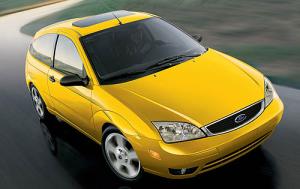
Older Ford Focus Pros
Affordability: Clearly older Focus models are less expensive, leading to significant savings upfront. However, this has to be weighed against the higher risk of potentially costly repairs going forward.
Depreciation: Older Focus models have already undergone significant depreciation, meaning there won't be the steep initial value drop that newer cars face. This can help minimize the long-term cost of ownership.
Lower Insurance Costs: Insurance premiums for older vehicles are typically lower than those for newer cars, which can help reduce overall transportation expenses.
Simplicity of Design: Older vehicles tend to have simpler mechanical and electronic systems compared to newer, more technologically advanced models. This simplicity can make repairs and maintenance easier and less expensive.
Availability of Parts: Since the Focus has been around for a while, finding replacement parts for older models is usually relatively easy and cost-effective, helping keep maintenance costs down.
Fuel Efficiency: Many versions of the Focus are known for their good fuel economy, especially those equipped with the more efficient engines and transmissions.
Handling: The Focus has been praised for its nimble handling and responsive steering, providing an engaging driving experience, particularly in urban environments and on winding roads.
Variety of Options: The Focus is available in several body styles, including sedan, hatchback, and even electric variants, providing options for different preferences and needs.
Technology Features: Depending on the trim level, the Focus can come equipped with various technology features such as touchscreen infotainment systems, smartphone integration, and advanced driver assistance systems for enhanced safety.
Older Ford Focus Cons
Reliability Concerns: Some owners have reported reliability issues, including problems with transmission, electrical components, and other mechanical issues.
Higher Maintenance Costs: While older cars may have lower upfront costs, they can come with higher maintenance and repair expenses as they age. Also, as they continue to age, components such as brakes, suspension, and engine parts may require more frequent replacement or repair.
Limited Features: Older Focus models may lack the latest technology and convenience features found in newer cars. If you value modern amenities like advanced infotainment systems, driver assistance features, or connectivity options, you may find older models lacking in these areas.
Fuel Efficiency: Older vehicles tend to be less fuel-efficient than their newer counterparts due to advancements in engine technology and efficiency standards. While a used Focus can still offer decent fuel economy, it may not be as impressive as newer models.
Safety Features: While the Focus has generally been considered a safe vehicle, older models may lack some of the advanced safety features found in newer cars, such as blind-spot monitoring, lane-keeping assist, or automatic emergency braking.
Interior Quality: While the Focus offers a comfortable cabin with supportive seats, some have noted that the interior materials and build quality may not feel as upscale as those found in some competitors.
Limited Rear Passenger Space: The rear seats of the Focus may feel cramped for taller passengers, particularly in the sedan version, which has limited headroom due to its sloping roofline.
Infotainment Interface: While the Focus offers modern infotainment features, some users have found the interface to be less intuitive or responsive compared to rival systems.
Resale Value: Historically, the Ford Focus has not retained its value as well as some competitors in the compact car segment, which could impact long-term ownership costs.
 By Josh Rosenberg
By Josh Rosenberg